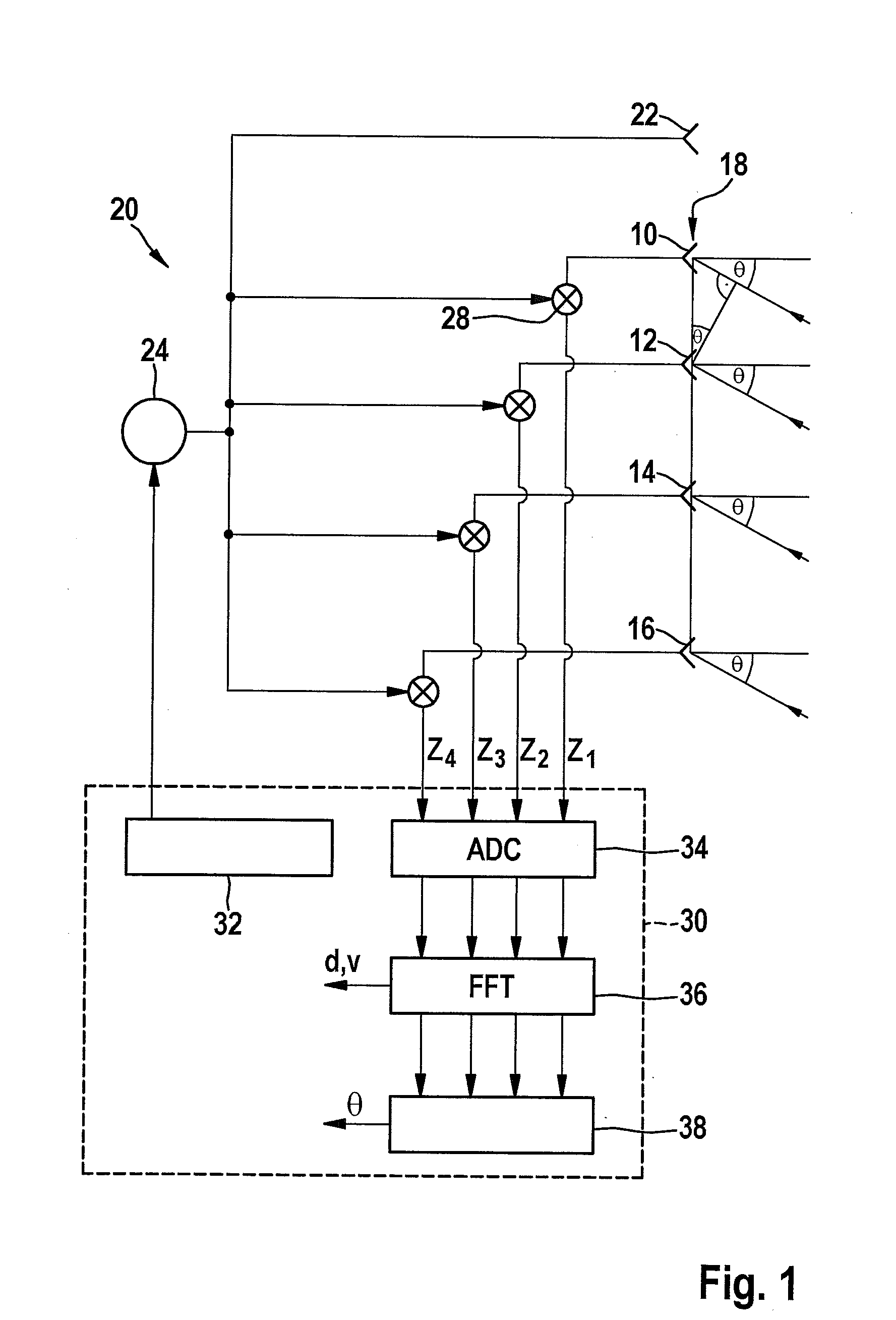Method for angle estimation and radar sensor for motor vehicles
a technology for motor vehicles and angle estimation, applied in the direction of antenna adaptation in movable bodies, instruments, measurement devices, etc., can solve the problems of inability to accurately estimate angle, and inability to use multiple dimensions at the same time. achieve the effect of simple and more accurate angle estimation
- Summary
- Abstract
- Description
- Claims
- Application Information
AI Technical Summary
Benefits of technology
Problems solved by technology
Method used
Image
Examples
Embodiment Construction
[0022]The radar sensor shown in FIG. 1 has four receiving antenna elements 10, 12, 14, 16 that together form a planar group antenna 18. The radar sensor is incorporated into a motor vehicle in such a way that antenna elements 10 to 16 are located next to one another at the same height, so an angular resolution capability of the radar sensor in the horizontal (in azimuth) is achieved. FIG. 1 symbolically depicts radar beams that are received by the antenna elements at an azimuth angle θ.
[0023]A high-frequency section 20 for applying control to a transmitting antenna element 22 is constituted, for example, by a monolithic microwave integrated circuit (MMIC), and encompasses a local oscillator 24 that generates the radar signal to be transmitted. The radar echoes received by antenna elements 10 to 16 are respectively delivered to a mixer 28, where they are mixed with the transmitted signal supplied by oscillator 24. This yields, for each of the antenna elements, an intermediate-frequen...
PUM
 Login to View More
Login to View More Abstract
Description
Claims
Application Information
 Login to View More
Login to View More - R&D
- Intellectual Property
- Life Sciences
- Materials
- Tech Scout
- Unparalleled Data Quality
- Higher Quality Content
- 60% Fewer Hallucinations
Browse by: Latest US Patents, China's latest patents, Technical Efficacy Thesaurus, Application Domain, Technology Topic, Popular Technical Reports.
© 2025 PatSnap. All rights reserved.Legal|Privacy policy|Modern Slavery Act Transparency Statement|Sitemap|About US| Contact US: help@patsnap.com



